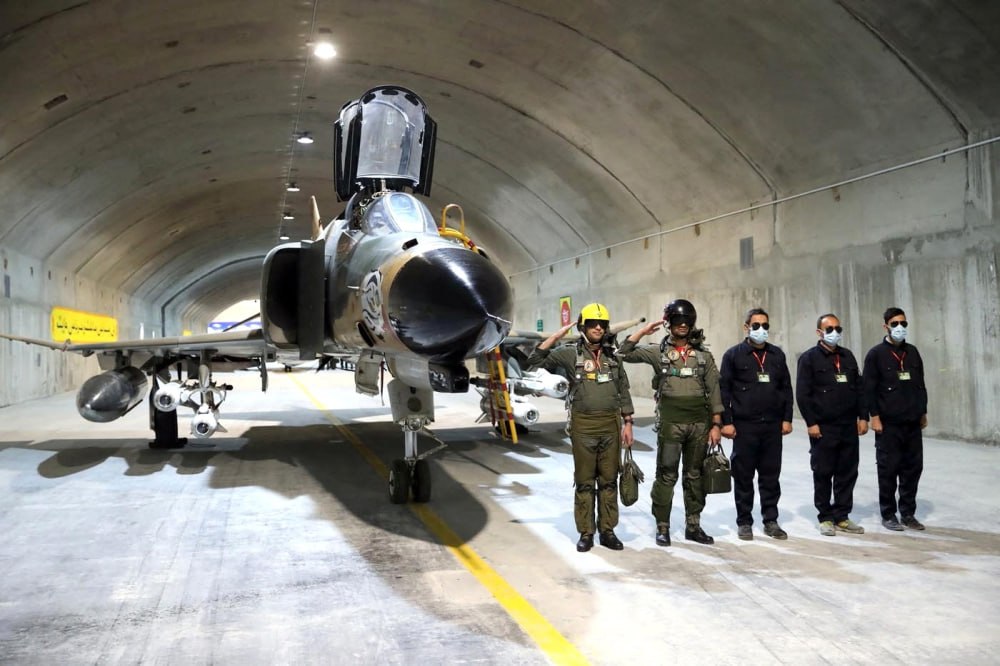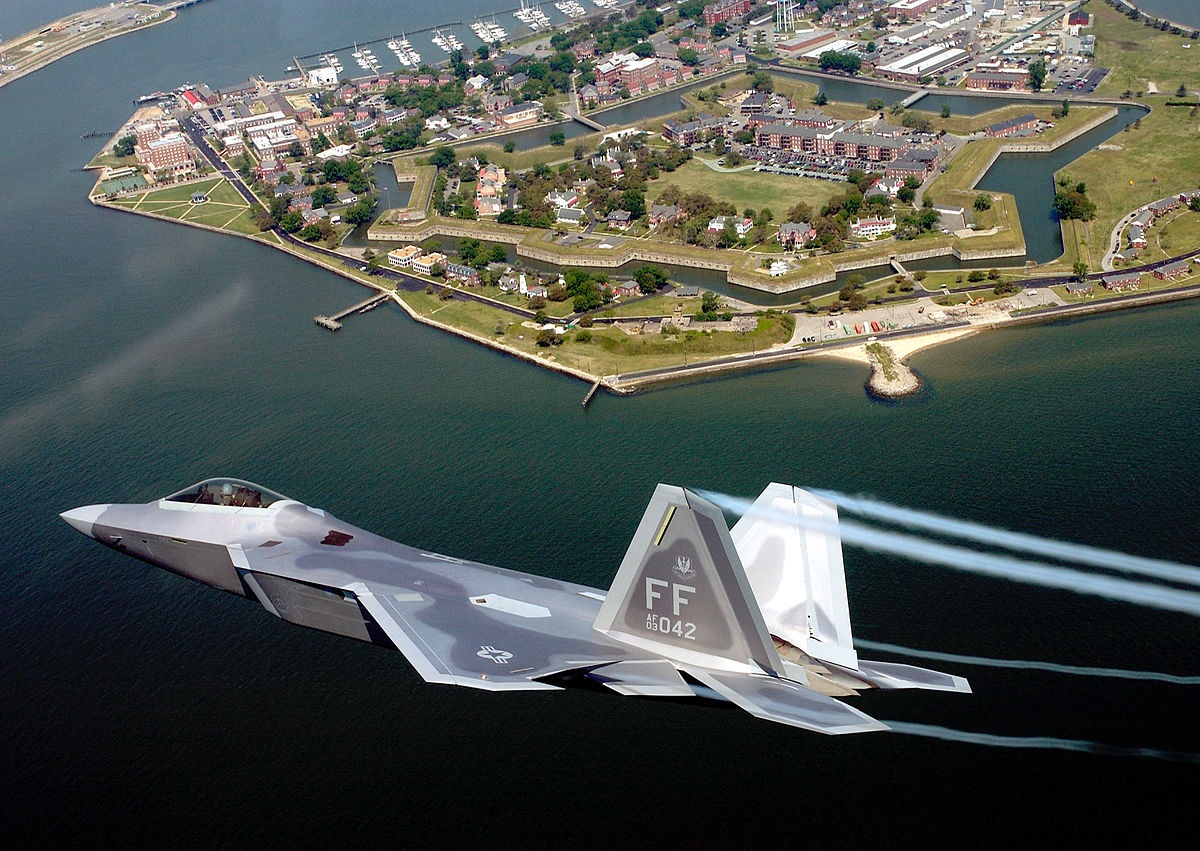Amid the raging Iran-Israel war and possible American intervention, U.S. Air Force F-22 Raptors landed at RAF Lakenheath in England on June 18 as President Trump considers joining Israel’s attacks on Iran.
The U.S. has so far declined to take on an offensive role in the war and has given Iran a 2-week ultimatum.
The F-22 is America’s premier fifth-generation air superiority fighter and has often been deployed amid global tensions, from the Middle East to the Indo-Pacific. If negotiations with Tehran fail, F-22, among other warplanes, could soon be in action!
Meanwhile, the EurAsian Times recalls an interesting incident about the F-22 Raptor that shocked the Iranian Air Force.
F-22 Raptor was escorting an MQ-1 drone on a surveillance mission just outside the Iranian border in 2013 when two Iranian F-4 Phantoms advanced to intercept it.
Xi Jinping Brings “Nuclear Revolution” In China; PLA To Have 1500 Nuke-Tipped ICBMs By 2035 That Can Hit U.S. Anywhere
Combat jets escorting drones became an SOP (standard operating procedure) after two Sukhoi Su-25 jets operated by the Iranian Revolutionary Guards tried to shoot down an American MQ-1 flying a routine surveillance flight in international airspace close to Iran.
The Iranians, oblivious of the new US drone-escort policy, attempted to engage another MQ-1. However, this time, the Iranians sent the F-4 Phantom, a US-origin aircraft that Tehran acquired in the 1970s, to do the job..
When the Iranian F-4 Phantoms were up for the mission, they had a surprise, a shock, rather!
The F-22 had not made its formal combat debut till then.
U.S. Helped Iran Build Its Nuclear Program; Will Washington Bomb Its Former Ally & End The “Nuke Threat”?
The stealthy F-22 could track and get beneath the Iranian F-4s undetected. The incident underscored the Raptor’s stealth capabilities.

F-4 Has No Chance Against F-22
Back in 2013, Pentagon press secretary George Little said that an Iranian Air Force F-4 Phantom combat plane tried to shoot down an MQ-1 Predator drone flying through international airspace. The F-4s came 16 miles from the Predator but ditched the pursuit after two American planes issued a warning message.
Details were withheld at that time due to security reasons. Later, former US Air Force Chief of Staff Gen. Mark Welsh. General Welsh told reporters that the fighter jet (F-22) was providing “HVAAE (High-Value Air Asset Escort) for the drone, which had come under attack.
Israeli Missiles “Ram Into Each Other”; Iran Claims Spectacular Electronic Warfare Attack To Spoof IDF Missiles
On September 17, 2013, the general not only confirmed that the escorting fighters were F-22 stealth fighters but also said that: “He [the Raptor pilot] flew under their aircraft [the F-4s] to check out their weapons load without them knowing that he was there, and then pulled up on their left wing and then called them and said ‘you really ought to go home,’” according to an essay in the Aviationist.
After Sukhoi-25’s attempt to shoot at the ‘Predators,’ the Pentagon escorted the drones on reconnaissance missions with fighter jets – either F-18 Hornets embarked on the aircraft carrier USS John C. Stennis or F-22 Raptors deployed to Al Dhafra in the United Arab Emirates.
If the episode went exactly as Welsh described it, it was something more similar to Tom Cruise’s ‘Maverick’ close encounter with Russian MiG-28s in Top Gun.
Welsh also provided other specific details about the incident. Apparently, the F-22s use advanced vectoring capabilities and “stealth” to intimidate and warn the Iranian 4th-generation aircraft of American origin. The F-22 made its combat debut against the Islamic State in 2014.
The encounter with the Iranian jets suggested that the combination of stealth, speed, and intense maneuvering gives the F-22 an unparalleled advantage when it comes to air superiority. Given that the F-22 was able to surprise the F-4s by getting into the position undetected, it reinforces its stealth capabilities.
From 90% To 65% — Israel’s Interception Rate Goes Down Big Time; IAF Expert Decodes Why IDF’s SAMs Are Leaking Missiles
Retired Air Force Col. Terry “Stretch” Scott found that out during his time flying the F-22 Raptor, the Air Force’s fifth-generation fighter designed to kick down the door of enemy air defenses.
The F-22 was designed to replace the F-15 as the US Air Force’s premier air superiority fighter. The plane is not just agile; it’s also sneaky.
With advanced sensors, the Raptor can detect threats from far away, while its stealthy shape and materials allow it to sneak up undetected on those threats. Its super-cruise ability allows it to sneak faster than threats can react, and, with its thrust vectoring capability, it can out-maneuver any opponent within visual range.
The F-22’s stealth design drastically decreases its radar cross-section (RCS) and infrared signature through airframe shaping, radar-absorbent materials, and other advanced techniques.
To further enhance its stealth capabilities, the F-22 has undergone several upgrades over the years, including a new chrome-like surface coating that reduces infrared tracking.

Earlier this year, during a recent deployment to the Middle East, F-22 pilots adjusted their tactics to protect US and allied forces from “low-end threats” like Iranian-made drones and cruise missiles.
In early August 2024, the Pentagon announced the deployment of a carrier strike group, additional warships, and an F-22 fighter squadron in response to concerns that Iran and its allies—Hamas, Hezbollah, and the Houthis—might attack Israel in retaliation for the assassination of Hamas leader Ismail Haniyeh.
F-35 “Lost” In India Not The 1st Time A UK Navy Jet Went Astray; Recalling The Bizarre Incident Of Sea Harrier
In an interview with Air & Space Forces Magazine, Johnson explained, “We were not necessarily worried about shooting down anybody else’s airplanes.”
“We were primarily there to defend our ground forces against the threats that were being posed by the UAVs in the AOR [Area of Responsibility], as well as the cruise missiles that we’ve seen become more prevalent, both from the Houthis as well as militia groups in the region,” he added.
While F-22s are designed for air-to-air combat, they were now being prepared to counter aerial threats that are much smaller and slower than the aircraft the Raptor was originally developed to destroy.
- Ritu Sharma has been a journalist for over a decade, writing on defense, foreign affairs, and nuclear technology.
- The author can be reached at ritu.sharma (at) mail.com
- Follow EurAsian Times on Google News



